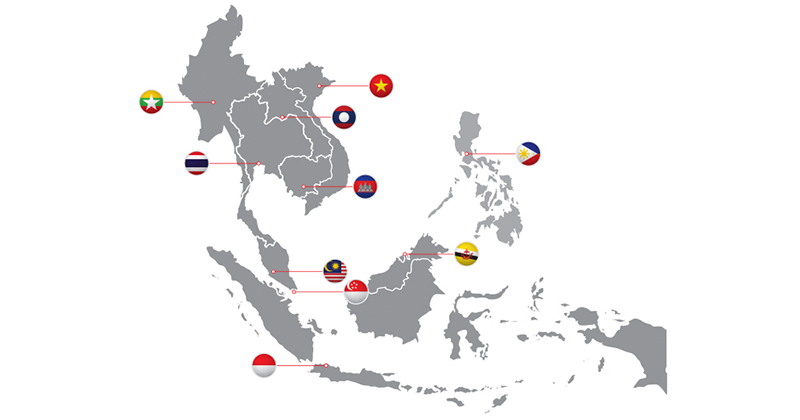ASEAN Economic Community: Forging Closer Ties
Digging Deeper: Case Studies
ASEAN Economic Community: Forging Closer Ties
3 minute read
 (Image: Enterprise Singapore)
(Image: Enterprise Singapore)
Southeast Asia is home to some of the fastest-growing economies in the world and is poised to become the fourth-largest single market by 2030. This has links to an idea from 2003 to create an single market in ASEAN.
In the early-2000s, global outlook for free trade was bleak. The World Trade Organization (WTO) was not able to move ahead with plans to liberalise trade and could not get major powers on board.
It was during this period that then-PM Goh Chok Tong mooted the idea of a single market for ASEAN – the ASEAN Economic Community (AEC). It would be “a single production base and a single market, with free movement of goods, services and capital”, and he saw it as “the only way to make sure we remain competitive in the face of growing regional and bilateral FTAs, post-Cancun”.
By liberalising trade, the region’s GDP could increase by at least 10%, reduce operational costs by up to 20%, and add US$50 billion to ASEAN’s GDP.
In 2007, the first AEC blueprint was drawn up, and the declaration was signed. In the first phase of the plan, ASEAN countries would move towards closer integration by 2015.
AEC aimed to help the region eliminate most intra-regional tariffs and remove formal restrictions in the services sector. It would simplify cross-border trading process and adopt common frameworks and standards to develop a more attractive investment business-friendly environment.
Between 2007 and 2015, trade in ASEAN grew by US$1 trillion, and Singaporean businesses were able to tap on the 600 million consumers in the region.
Building on the first phase, the next lap of economic integration is expected to be complete by 2025. It eventually aims to establish ASEAN as a single market, with the free flow of trade and investment among the 10-member states. It will remove non-tariff barriers and prepare the region for growth in areas such as e-commerce.
However, the AEC goes beyond promoting free trade. As a bloc, the AEC will have tremendous influence when dealing with other big trading partners such as China and Europe. It will also attract large amounts of investments from investors eager to be part of the ASEAN’s growth.
More importantly, closer integration will anchor stability within the region and promote cooperation among member states. For Singapore, this is an invaluable part of its foreign trade efforts and will keep Singapore attractive to companies looking to expand into Southeast Asia.

